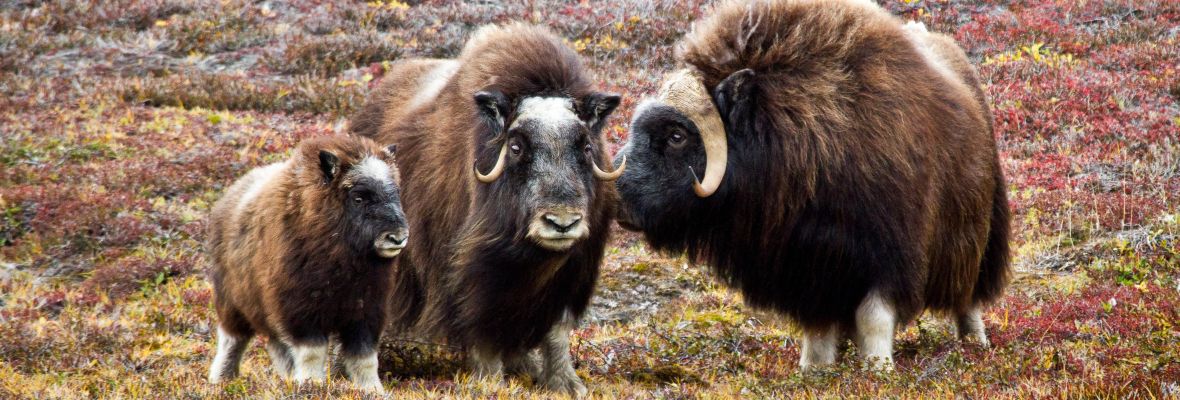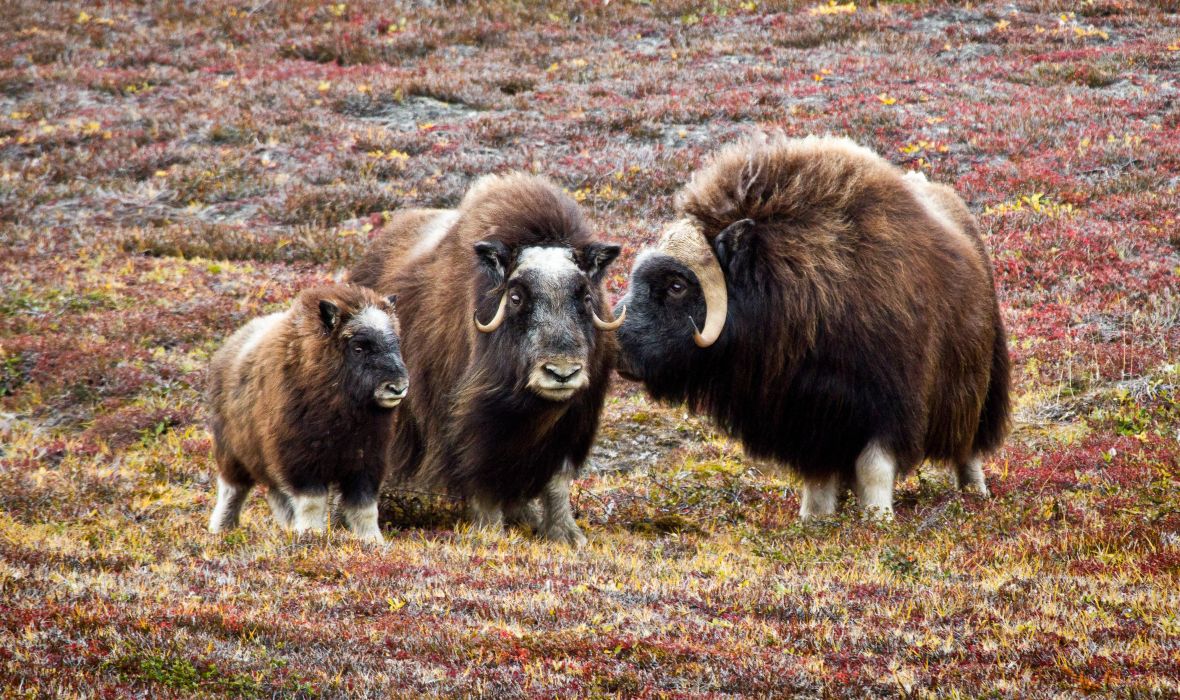What does a muskox look like?
Musk oxen are compact and have a stocky body adapted to conserve heat. They are covered with the world’s warmest and thickest wool hair, which is 70 cm long. Adult muskoxen weigh between 200-450kg and have an approximate length of 1.9-2.5 m, with males usually being bigger. They have curved horns and are dark brown with lighter hair in some parts of the body.
Where do muskox live?
The musk ox habitat is in the tundra regions of the Arctic. Originally, it came from the northern Arctic areas of Canada. This animal continued travelling northwards until it found the harsher northern regions of Greenland. In modern times, small populations of musk oxen can be observed in West Greenland and Norway, but because winter is not as cold and dry there, those areas are not as attractive for them. Furthermore, a herd was introduced in the northeastern Greenland regions of Svalbard in 1929, but the last animal was seen in 1983. As for the western Greenlandic regions around Kangerlussuaq, since the conditions suit the musk oxen, it has the world's largest population, estimated at 10,000 to 25,000 individuals. These oxen can also be seen in Disko Bay and Nuup Kangerlua.
What do muskox eat?
The musk ox is a herbivorous ruminant animal that feeds on grasses, Arctic willows, mosses, and lichens. During harsh winter seasons, musk oxen struggle to find food, as it is too deeply buried in the snow, making it inaccessible. So, they have to feed on bare twigs and branches. This is possible because of its highly efficient digestive system, which has a long intestinal tract that can break down all types of food found in the Arctic.
What is the origin of the name "musk ox"?
The name 'musk ox' derives from the fact that the male secretes a small amount of musk oil with a strong smell during the seasonal mating, which attracts females.
How many muskox are left in the world?
According to the IUCN Red List, muskoxen are classified as ‘Near Threatened’. Their population is estimated at 80-125,000 individuals.
Who are the predators of the muskox?
Muskoxen's main predators include wolves and bears. To defend themselves, they are frequently observed in groups of about 20 individuals, with the strongest positioned at the edge to protect baby muskoxen.




